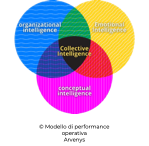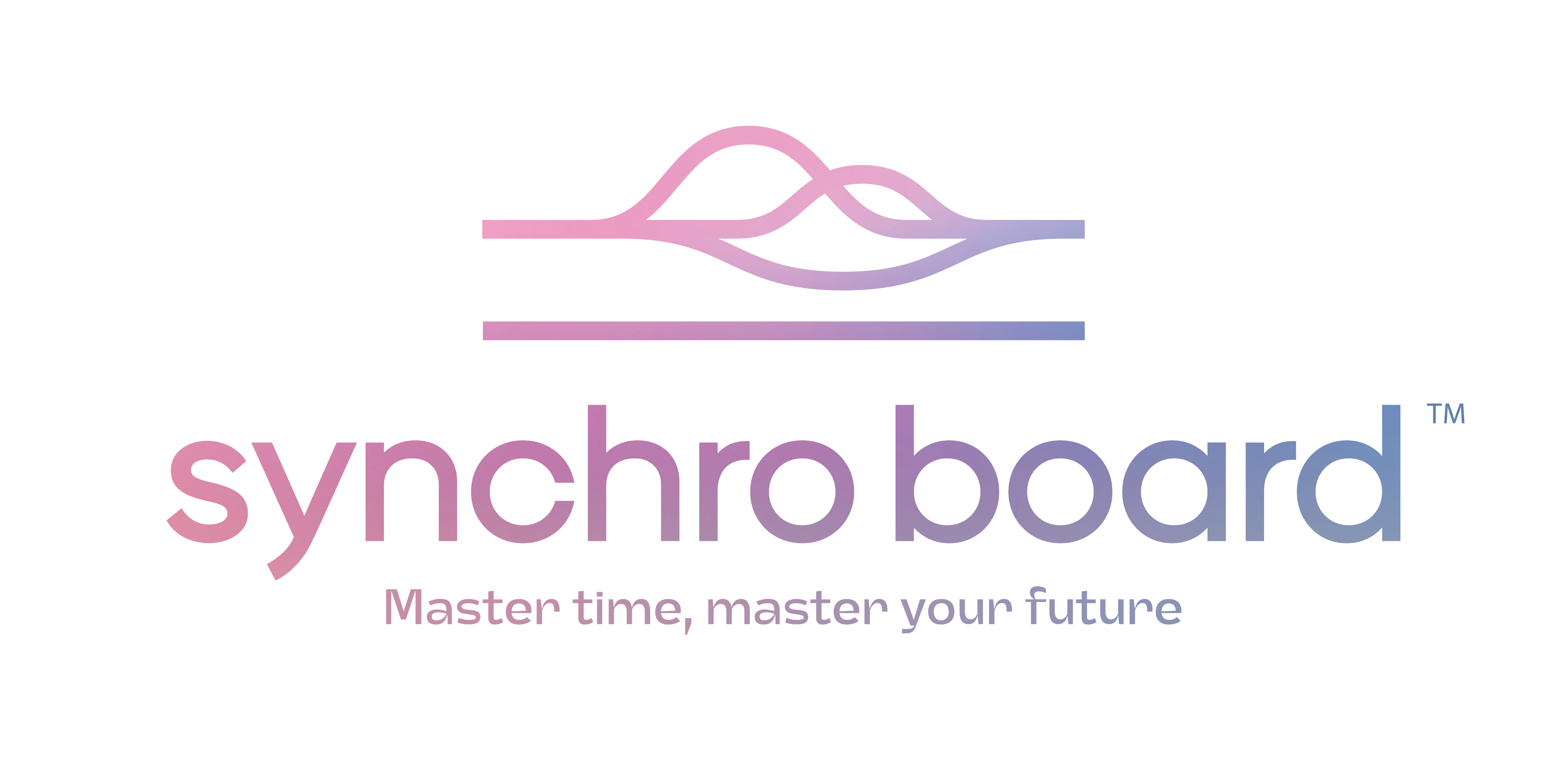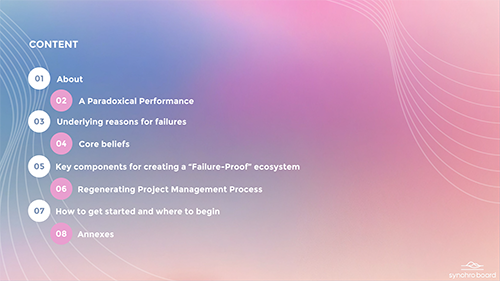SYNCHRO BOARD™
For those aspiring to premium performance in managing complex projects.
Synchro Board™ is a next-generation collaborative platform designed to address the systemic causes of project management failures.

SPEEDS UP THE DECISION-MAKING PROCESS
Thanks to a visual language, updating and monitoring the project become simple and fast, allowing everyone to immediately know if the project is up-to-date, on schedule, and if obstacles have been addressed.

MAKES THE WORK OF THE PROJECT MANAGER AND PARTICIPANTS EASIER
No more emails or phone calls: all information about task progress and availability is on Synchroboard, updated in less than a minute.

MAKES THE PROJECT DELIVERY DATE RELIABLE.
Risky activities are certified as compliant, and errors are identified as close as possible to their root cause.

FOCUSES EVERYONE’S ATTENTION
Only activities requiring cross-functional synchronization are managed with Synchroboard, making project management clearer and focused on key elements. Function-specific activities are managed locally through a dedicated Synchroboard.

STRENGTHENS THE SYNCHRONIZATION OF PEOPLE AND ACTIVITIES.
The start date of an activity is flexible. What matters is to begin immediately after the completion of the preceding activity, regardless of the specific date, while adhering to the deadlines for the activity’s end date.

ENCOURAGES SYNERGY AMONG PARTICIPANTS
Priority is given to the project’s deliverables rather than individual tasks or the time management of each member.

DEEPENS THE RELATIONSHIP BETWEEN PEOPLE AND PROJECT TIMING.
What matters is the remaining time to complete a task, not the percentage of progress, which concerns only its responsible party. With Synchroboard, the goal is to use only the necessary time, avoiding merely consuming the allocated time.

DEVELOP THE COLLECTIVE INTELLIGENCE
Creates an environment where individual skills combine to achieve superior collective performance.
KEY FEATURES

PROGRESSIVE TIMELINE SCALING FROM MEDIUM-LONG TERM TO SHORT TERM
Since medium- and long-term activities require less precision than short-term ones, the timeline is adjusted, transitioning progressively from a highly compressed representation to a more detailed one as the current date approaches.

TASKS GROUPED BY FUNCTIONS
Unlike traditional Gantt charts, where tasks are organized based on their sequence, Synchroboard™ assigns each function a specific “lane” within the project. This lane groups all tasks to be performed by that function, simplifying their identification and tracking for both the project manager and team members involved.

NUMEROUS POSSIBILITIES TO FILTER DATA
In complex projects, quickly accessing the necessary information is essential to enhance responsiveness and streamline decision-making. Synchroboard addresses this need with powerful filters that allow data to be organized by function, activity, or individual. Additionally, the ‘compressed’ mode provides an at-a-glance overview of the project, with the option to view all details by hovering over each task.

TASK DURATION AND PROGRESSION ASSESSMENT
In complex projects, the numerous interactions between tasks and people and the simultaneous involvement of some individuals in multiple projects make it challenging to accurately estimate the duration and time needed to complete tasks. Synchroboard™ prioritizes an assessment based on intuition rather than mathematical calculations. It focuses primarily on engaging the right hemisphere of the brain, which is dedicated to synthesis and creativity, rather than the left hemisphere, which is more oriented toward arithmetic calculations and often less suited to complex contexts.

PROJECT UPDATING
Thanks to the “drag-and-drop” functionality, all team members can update data in real-time, simultaneously, even if they are distributed across multiple locations. Regular meetings are held to analyze synchronization deviations, leverage their advantages when possible, or mitigate their negative effects. The main goal is to ensure and secure the project’s delivery date.

DATA AND SOURCE CODE SECURITY
Data Security: The solution is hosted on a cloud platform that ensures the highest European security standards.
Source Code Security: The tools we use allow us to measure source code security. Additionally, a Secret Management system has been implemented to guarantee maximum security.

CUSTOMIZATION
Synchroboard™ seamlessly integrates with the project management applications already in use, ensuring smooth compatibility. Additionally, the interface can be customized with your brand chart for a tailored experience.
It is also possible to add or remove milestones or tasks at any stage of the project.
TESTIMONIALS
Luca C.
We were in the midst of applying lean methodologies to our design processes, aiming to shorten the time-to-market for a new product. We planned with the skills available, trying to anticipate delays and implement preventive corrective actions, but despite our efforts, we quickly fell behind schedule.
That’s when we introduced the concept of the Syncro Board. Initially, the designers were skeptical, and the Project Manager feared further delays. However, the results exceeded all expectations: within four weeks, not only had we recovered the delay, but we were ahead of the original schedule. We completed the project four weeks early, achieving a remarkable 16.6% reduction in the estimated 24-week time-to-market.
At the time, I was Director of Lean and Strategic Operations at FAAC SpA. Today, I work in organizational development, and the Syncro Board approach has become an indispensable companion on this journey.
Didier P.
“Thanks to its adjustable timeline, Synchroboard™ helped us focus on the end dates of synchronized activities, enabling us to meet our commitments in terms of time, quality, and cost. By using only the necessary time for each activity and reducing downtime between them, we even managed to deliver our product ahead of schedule. This allowed us to secure an additional order, initially assigned to a competitor whose planning proved less effective. I can only highly recommend it.”
Saverio G.
**“I believe that Synchroboard is an extremely useful tool for managing any project complex enough to require the involvement of multiple departments/functions at different stages of development. Synchroboard ensures, with the necessary degree of ‘periodicity,’ the simultaneous sharing of any issue with potential cross-functional impact, reducing reaction times, minimizing downtime, and at the same time strengthening team spirit by enabling a group of individuals to become a cohesive team focused on a common goal.
I consider this methodology for managing and overseeing complex cross-functional projects to be a milestone for the continuous improvement of corporate performance.”**
Mecchanical Designer
“I had just completed training in project management when Synchroboard™ was introduced in the company. I discovered an innovative interpretation of traditional project management concepts. I am thrilled with it.”
Michele D.
“We had questioned our project management approach multiple times without ever achieving truly better results. SYNCHROBOARD won us over with its ability to simplify the management of complex projects. We thought a sophisticated application was necessary to handle our complex products, but SYNCHROBOARD surprised us by proposing to ‘break the project into smaller parts’ and manage them easily with a very straightforward tool. It was this simplicity that surprised and convinced us.”
Marco T.
“Despite a very tight time-to-market, Synchroboard™ allowed us to start production on time, with significantly fewer issues at launch compared to the past, while also meeting target costs and the project budget. We were all amazed by its potential and the results achieved.”
DISCOVER WHO WE ARE
Our Mission

“To design an ecosystem for the most demanding clients, capable of addressing the root causes of project management failures, systematically ensuring the achievement of predefined objectives.”
Synchroboard Team
Our journey towards Synchro board™
We are, first and foremost, consultants with over 25 years of experience supporting SMEs and large companies across Europe and the world in improving their operational and strategic performance.
Project management, central to many of the processes we address, has become a top priority.
We have therefore focused our efforts on enhancing project management performance by identifying and addressing the systemic causes of failure.
From this vision, Synchroboard™ was born—a result of over 10 years of development and continuous improvements, made in collaboration with our clients.
And this is just the beginning: there are still many challenges and opportunities to embrace.
Synchroboard™ will continue to evolve, with new versions already in the pipeline.

Our Beliefs Behind the Creation of Synchro board™

To ensure a premium level of performance, the fundamental principles of lean must serve as the foundation for the design of Synchroboard™.
The concepts derived from the Agile methodology have consistently demonstrated their effectiveness in project management.
We have adapted them to integrate seamlessly with other tools and methodologies.
Best practices, born from years of consolidated experience, are invaluable lessons.
We compared them with Synchroboard™ to identify and address any gaps or discrepancies.
Finally, we challenged the established knowledge and teachings in project management to tackle and resolve the systemic causes of failure in this field.
Synchro board™ : Our Solution to Address the Recurring Causes of Project Management Failures
What makes Synchroboard™ unique is the integration of three essential spheres:

- Technical knowledge and acquired beliefs, grounded in solid experience.
- Practical and organizational skills, developed through concrete experimentation.
- Emotional intelligence, encompassing the ability to manage one’s own emotions and interact effectively with others.

We believe that the interplay of these three spheres is the key to achieving superior performance, embodying the essence of collective intelligence.
It is precisely this collective intelligence that enables the resolution of many systemic causes of project management failures.
Far more than a simple project management application, Synchroboard™ is a true meta-tool.
It is designed to integrate seamlessly into strategic processes, such as new product development, on-demand customization, or any context requiring rigorous time and resource management.
SOME REFERENCES FROM OUR CLIENTS














RESOURCES
12 Laws and Practices to Ensure Project Management Success
Project management is a complex discipline where each phase requires careful planning and methodical execution.
To maximize the chances of success, it is essential to integrate commonly recognized laws and best practices.
These principles, developed over decades of experience, allow project managers to anticipate obstacles, manage resources effectively, and ensure consistent results.
By adopting these principles, project managers reduce uncertainties and enhance the team’s ability to handle unexpected challenges.
Respecting these laws and best practices ensures a solid structure and transforms a complex project into a measurable success, while optimizing the time and resources invested.
These principles have been integrated into the Synchroboard™ ecosystem. Below, we provide our personal interpretation of them.
Of course, there are other laws, aphorisms, sayings, and maxims that require no explanation, as their simplicity speaks for itself.
Here are a few examples:
•“MOONSHINE”, attributed to my sensei Akao San:
“Don’t waste time explaining to your bosses what you want to do and why. They don’t know the gemba. Do it without saying anything and then show them what you’ve accomplished. You’ll hear your bosses say: ‘That’s exactly what I wanted you to do.’”
•“Speed matters little; what’s important is heading in the right direction.”, a maxim by Lord Baden Powell, founder of the Scouting movement, who also said about leadership:
“If you run, they’ll walk. If you walk, they’ll sit. If you sit, they’ll lie down.”
Lastly, here are a few laws attributed to AMA, a senior consultant I have known for some time:
•“We’re always better at solving other people’s problems than our own, for which we always find endless justifications.”
•Its corollary: “We’re always less tolerant of others than we are of ourselves.”
•“The difference between explaining and justifying is the same as the difference between those who improve and those who remain stuck in the status quo.”
•“It’s madness to think you’re being helpful by dedicating time to doing, with less expertise, what a colleague couldn’t do due to a lack of time.”
Murphy’s Law: Anything that can go wrong, will go wrong.
Although often regarded as a humorous or pessimistic quip, Murphy’s Law highlights a critical reality in many fields, particularly in project management.
Through personal experience, I’ve developed an even more realistic variation:
“Anything that can go wrong will go wrong—and at the worst possible moment!”
Origin of Murphy’s Law
Murphy’s Law is named after Edward A. Murphy Jr., an American aerospace engineer who worked on human tolerance to gravity tests in the 1940s.
During one failed experiment caused by an improperly installed device, Murphy reportedly said, “If someone can make a mistake, they will.”
The phrase was later shortened to its current form.
Practical Examples of Murphy’s Law in Project Management
•Delivery delays: If a supplier can be late, they likely will be—and at the worst time.
•Software bugs: Even the most carefully prepared update can cause unexpected malfunctions at critical moments.
•Miscommunication with stakeholders: If a message can be misunderstood, it probably will be, and always at the most inconvenient moment.
How to Counter Murphy’s Law
A well-known corollary provides insight into managing Murphy’s Law:
“The devil is in the details.”
This common phrase highlights how overlooked or poorly managed minor details often lead to unexpected problems, allowing Murphy’s Law to take hold.
3 Recommendations to Counter Murphy’s Law
1.Meticulous project preparation:
Conduct a thorough risk analysis covering quality, costs, timelines, and performance of the proposed solution.
2.Divide the product into modules:
Break down the product into verifiable elements or modules, ensuring that issues are identified early in individual stages rather than during final execution or installation.
3.Root cause analysis:
When Murphy’s Law manifests, conduct a detailed investigation of the root causes, develop countermeasures, and address process or behavioral deficiencies.
By following these strategies, teams can significantly mitigate the impact of Murphy’s Law and improve project outcomes.
Parkinson’s Law: Work expands to fill the time available for its completion.
La Legge di Parkinson, formulata da Cyril Northcote Parkinson nel 1955, afferma:
“Il lavoro si espande fino a occupare tutto il tempo disponibile per completarlo.”
In altre parole, più tempo viene concesso per svolgere un compito, più questo tende a espandersi, spesso a scapito dell’efficienza.
Applicazione della Legge di Parkinson nella gestione dei progetti
1.Diluzione degli sforzi:
Con tempi generosi, i team modulano i loro sforzi, dilatando inutilmente attività semplici.
Esempio:
Un compito stimato in 3 giorni potrebbe occupare un’intera settimana se pianificato su tale arco temporale.
2.Procrastinazione e inefficienza:
Quando il tempo è abbondante, i team tendono a ritardare l’inizio delle attività o concentrarsi su aspetti secondari, riducendo l’efficienza complessiva.
3.Aggiunte non necessarie:
Tempi eccessivi incoraggiano i team ad aggiungere dettagli o funzionalità superflue, complicando il progetto senza un reale valore aggiunto.
Conseguenze nella gestione dei progetti
•Rischio di sforamenti:
Le attività tendono a dilatarsi, compromettendo le scadenze generali.
•Costi aggiuntivi:
Tempi più lunghi comportano un maggior impiego di risorse, aumentando i costi.
•Perdita di produttività:
La diluizione degli sforzi crea un senso di inefficienza, demotivando il team.
Come contrastare la Legge di Parkinson?
1.Definire scadenze realistiche ma serrate:
Dare il tempo giusto spinge i team a concentrarsi e completare le attività in modo più efficace.
2.Utilizzare tappe intermedie:
Suddividere il progetto in fasi con scadenze chiare aiuta a mantenere un ritmo costante.
3.Adottare approcci agili:
Cicli brevi con deliverable frequenti limitano la dilatazione del lavoro.
4.Responsabilizzare il team:
Monitorare regolarmente i progressi e mantenere una comunicazione trasparente per garantire il focus sugli obiettivi principali.
5.Riconsiderare il significato della durata di un’attività:
La durata è influenzata da fattori come esperienza e multitasking, ma il vero obiettivo è minimizzare il tempo effettivamente consumato.
L’approccio Synchroboard™
•Synchroboard™ elimina l’uso del colore “verde” per indicare che un’attività è completata, perché non rappresenta adeguatamente la realtà.
•Il tempo assegnato a un’attività non è un budget da consumare interamente: appartiene al progetto, non al singolo esecutore.
•Promuove una visione in cui il tempo è considerato una risorsa preziosa da ottimizzare.
Conclusione
La gestione del tempo deve essere vista come un’opportunità per ottimizzare le risorse al servizio degli obiettivi di progetto, non come un vincolo.
Adottando un approccio realistico e flessibile, come quello di Synchroboard™, i team possono ridurre le discrepanze nelle stime e focalizzarsi sulle priorità strategiche.
Ogni attività deve essere al servizio del progetto, mai il contrario. Solo così è possibile migliorare le prestazioni e raggiungere un’efficienza reale e misurabile.
Hofstadter’s Law: It always takes longer than you expect, even when you take into account Hofstadter’s Law.
“It always takes longer than you expect, even when you take into account Hofstadter’s Law.”
Hofstadter’s Law highlights a universal truth: projects, whether personal or professional, often take more time than anticipated, even when potential delays are considered.
Origin and Context
Douglas Hofstadter introduced this law while addressing the challenges of solving complex problems, such as creating artificial intelligence or algorithms. However, its relevance extends far beyond these fields, applying to any context where planning plays a critical role.
Key Causes Behind Hofstadter’s Law
1. Systematic Underestimation of Tasks
People tend to be overly optimistic about their ability to complete tasks, overlooking details and potential setbacks.
2. Project Complexity
Even seemingly straightforward projects can conceal dependencies or unexpected challenges.
3. Self-Referential Effect
The law itself notes that adjusting predictions to account for delays is insufficient, as unforeseen issues will continue to arise.
Implications for Project Management
Hofstadter’s Law significantly impacts project planning, leading to:
• Missed Deadlines
Delays become almost unavoidable, even with meticulous planning.
• Domino Effect
Delays in critical tasks can disrupt the entire project timeline.
• Stakeholder Frustration
Failing to meet deadlines can erode the trust of clients and stakeholders.
How to Mitigate the Effects of Hofstadter’s Law
1. Add Safety Buffers
Not for every individual task but for groups of interrelated tasks contributing to a project sub-deliverable.
Example: Use time buffers inspired by the “supermarket” concept from just-in-time (JIT) production to ensure intermediate results are delivered on schedule without delaying subsequent activities.
2. Break Down Tasks
Divide the project into smaller, manageable steps to better estimate the time required for each. This approach increases precision in forecasting and resource allocation.
3. Risk Analysis
Identify critical tasks and dependencies that could cause delays, and define actions to mitigate these risks. Unfortunately, this step is often neglected or insufficiently monitored.
4. Flexibility in Planning
Since tasks can only be completed either before or after their planned date, regular rescheduling of subsequent activities is necessary. This ensures precise synchronization between the completion of predecessor tasks and the start of successor tasks. This necessity inspired the name of our application: Synchroboard™.
5. Iterative Approaches
Increase the frequency of reviews and structure projects to produce intermediate results. This reduces the overall impact of delays.
Conclusion
“It always takes longer than you expect, even when you take into account Hofstadter’s Law.”
Hofstadter’s Law highlights a universal truth: projects, whether personal or professional, often take more time than anticipated, even when potential delays are considered.
Origin and Context
Douglas Hofstadter introduced this law while addressing the challenges of solving complex problems, such as creating artificial intelligence or algorithms. However, its relevance extends far beyond these fields, applying to any context where planning plays a critical role.
Key Causes Behind Hofstadter’s Law
1.Systematic Underestimation of Tasks
People tend to be overly optimistic about their ability to complete tasks, overlooking details and potential setbacks.
2.Project Complexity
Even seemingly straightforward projects can conceal dependencies or unexpected challenges.
3.Self-Referential Effect
The law itself notes that adjusting predictions to account for delays is insufficient, as unforeseen issues will continue to arise.
Implications for Project Management
Hofstadter’s Law significantly impacts project planning, leading to:
•Missed Deadlines
Delays become almost unavoidable, even with meticulous planning.
•Domino Effect
Delays in critical tasks can disrupt the entire project timeline.
•Stakeholder Frustration
Failing to meet deadlines can erode the trust of clients and stakeholders.
How to Mitigate the Effects of Hofstadter’s Law
1.Add Safety Buffers
Not for every individual task but for groups of interrelated tasks contributing to a project sub-deliverable.
Example: Use time buffers inspired by the “supermarket” concept from just-in-time (JIT) production to ensure intermediate results are delivered on schedule without delaying subsequent activities.
2.Break Down Tasks
Divide the project into smaller, manageable steps to better estimate the time required for each. This approach increases precision in forecasting and resource allocation.
3.Risk Analysis
Identify critical tasks and dependencies that could cause delays, and define actions to mitigate these risks. Unfortunately, this step is often neglected or insufficiently monitored.
4.Flexibility in Planning
Since tasks can only be completed either before or after their planned date, regular rescheduling of subsequent activities is necessary. This ensures precise synchronization between the completion of predecessor tasks and the start of successor tasks. This necessity inspired the name of our application: Synchroboard™.
5.Iterative Approaches
Increase the frequency of reviews and structure projects to produce intermediate results. This reduces the overall impact of delays.
Conclusion
Hofstadter’s Law reminds us that unforeseen issues and complexities are inherent in any project. Instead of aiming for perfect planning, it’s crucial to adopt a flexible and proactive management approach. This ensures a better response to unexpected challenges and delivers more predictable and sustainable outcomes.
The 90-90 Rule: The first 90% of the project takes 90% of the time, and the remaining 10% also takes 90% of the time.
The 90-90 Law, often humorously cited in the fields of software development and project management, states:
“The first 90% of a project takes 90% of the time, and the remaining 10% also takes 90% of the time.”
Interpretation and Scope
This law highlights a well-known phenomenon in complex projects: the underestimation of the effort required in the final stages of work.
It illustrates how the final tasks, often perceived as secondary or quick to complete, end up being much longer and more complicated than expected.
•First 90%: Typically includes the initial phases, such as design, development, or execution of the main project outlines. These phases are often well-planned and mostly adhere to the timeline.
•Last 10%: Involves adjustments, fixes, testing, validation, and refinements. These activities are slowed by unforeseen issues, last-minute changes, or unanticipated problems.
Key Causes of the 90-90 Law
1.Underestimation of Finishing Touches
Details such as testing, bug fixes, and final validations are often undervalued in terms of the time and energy they require.
2.Increasing Complexity
As the project progresses, dependencies and challenges become more apparent, making final adjustments more intricate.
3.Growing Pressure
The last 10% of a project often coincides with the approach of the deadline, increasing stress and the likelihood of errors.
Examples of Application
•Software Development: Initial phases, like writing core code, progress swiftly, but final testing, bug fixes, and deployment take much longer than expected.
•Construction: The main structure may be completed on time, but finishing touches (painting, electrical installations, decorations) often cause delays.
•Project Management: Even when major milestones are achieved, final adjustments to meet all stakeholder requirements can consume significant time.
How to Counter the 90-90 Law?
1.Accurate Planning
Similar to Hofstadter’s Law, include “supermarkets” for each project sub-deliverable and, at the end, a “supermarket” for the entire project. This buffer time separates the completion of the last task from the actual delivery date. In Synchroboard, this is called the “time bank,” monitored with a specific indicator to ensure it isn’t consumed faster than the project progresses, akin to the Agile Burn-Down Chart.
2.Anticipation of Details
Pay greater attention to estimating the time needed for refinements, testing, and adjustments, and plan accordingly.
3.Regular Iterations
Deliver incremental parts of the project to identify and resolve issues as early as possible, preventing them from accumulating at the end.
4.Proactive Risk Management
Identify critical points likely to delay the final stages of the project and prepare mitigation strategies.
Conclusion
The 90-90 Law, while presented humorously, offers a realistic reminder: in the final phases of a project, details often require more time and energy than anticipated.
Effective planning and a proper anticipation of unforeseen issues can significantly reduce the impact of this phenomenon, improving overall project management and ensuring better outcomes.
Brooks’ Law: Adding manpower to a late project only makes it later.
The Brooks Law, formulated by Fred Brooks in his classic book The Mythical Man-Month (1975), is a fundamental principle in project management, especially in software development. It states:
“Adding manpower to a late project only makes it later.”
Explanation
The Brooks Law highlights the limitations of adding human resources to a project that is already delayed.
Contrary to the common belief that more people can speed up a project, the reality is that adding resources often results in a loss of productivity for several reasons:
1.Integration Time
New team members require training and updates on the project’s status, which consumes time and resources from existing team members.
2.Increased Communication Complexity
As team size grows, the effort required for coordination increases exponentially, complicating communication and decision-making processes.
3.Indivisible Tasks
Certain aspects of a project, such as design or solving complex issues, cannot be split among multiple people.
In these cases, adding resources provides no benefit.
Context and Applications
•Software Development
Brooks observed this law in large-scale software projects, where adding developers to an already-delayed project exacerbated delays due to challenges in coordination and integration.
•Project Management in General
The law applies across industries where adding new resources to a disorganized or delayed project leads to further chaos and inefficiency.
Practical Example
Imagine a delayed project where five developers are working on a complex application. Adding three more developers forces the original five to:
•Train the newcomers.
•Redistribute work and manage dependencies.
This slows their work pace and temporarily worsens delays instead of addressing them.
How to Counter the Brooks Law?
1.Plan Better from the Start
•Anticipate resource needs and include realistic safety margins.
•While this principle seems obvious, resource estimation is often poorly executed or neglected.
2.Modularize Tasks
•Break projects into independent subsystems, allowing new members to contribute without disrupting the entire flow.
•This modularity should reflect that of the product being developed, which is now a prerequisite for competitiveness.
3.Improve Tools and Processes
•Use management tools that facilitate collaboration and reduce communication overhead.
•Synchroboard excels in this area with its highly efficient visual system, enabling even an external observer to determine in under a minute whether a project is being properly managed.
4.Reassess the Timeline
•In some cases, it’s better to accept delays and reorganize the workload rather than overburden the team.
•This approach is crucial and integral to the practices taught within the Synchroboard ecosystem.
Conclusion
The Brooks Law reminds us that complex projects cannot always be accelerated by merely increasing manpower.
Effective planning, a well-defined structure, and efficient processes are essential to avoid delays and inefficiencies, ensuring smoother and more productive project management.
Humphrey’s Law: Users don’t always know what they want until they see it.
The Humphrey Law, attributed to Watts Humphrey, a pioneer in software engineering and the creator of the Capability Maturity Model (CMM), states:
“Users don’t know what they want until they see it.”
Interpretation
The Humphrey Law highlights a fundamental challenge in product development, particularly in software: user requirements are often poorly defined or constantly evolving. Even when initial needs are clearly expressed, they may turn out to be vague or inadequate to meet actual demands.
Key Causes Behind the Humphrey Law
1.Limited User Vision
Without a concrete demonstration, users may struggle to envision how a product or solution will address their needs.
2.Evolving Expectations
As a project progresses, users develop a clearer understanding of their real needs, often different from their initial requests.
3.Project Complexity
Software systems, in particular, are often so intricate that their interactions and functionalities cannot be fully understood before implementation.
Implications for Project Management and Software Development
1.Requirement Drift
Frequent changes in user needs (commonly known as scope creep) can cause delays, budget overruns, and frustration.
2.Insufficient Communication
The law emphasizes the importance of continuous communication between the development team and users to reduce misunderstandings.
3.Prototyping Necessity
It justifies using mockups, prototypes, or early versions to let users “see” and refine their expectations.
Approaches to Managing the Humphrey Law
1.Agile Methodologies
Frameworks like Scrum or Kanban enable incremental product releases, gathering user feedback, and rapidly adjusting features.
However, this strategy must be used carefully: an incremental and iterative approach should not replace a thorough exploration of needs and priorities, a process that the Quality Function Deployment (QFD) method excels at.
2.Rapid Prototyping
Create mockups or functional prototypes early in the project to allow users to test and refine their expectations.
3.Collaborative Workshops
Actively involve users during design phases to bridge the gap between real and declared needs.
4.Frequent User Testing
Conduct regular test sessions with real users throughout the project to validate developing functionalities.
Conclusion
The Humphrey Law is a strong reminder that projects must be flexible and user-centric.
By leveraging appropriate methodologies and working closely with stakeholders, teams can reduce uncertainties and meet users’ real needs, even as these evolve over time.
However, accommodating evolving requirements should not, under any circumstances, extend the overall duration of the project.
The Law of Complexity: The more complex a project, the greater the potential points of failure.
The Law of Complexity, while not formally defined as a single “law,” refers to the idea that the complexity of a system or project tends to grow over time, often exponentially, as new elements are added.
A possible formulation of this concept is:
“Complexity increases with the scale of a project or system, and each addition makes management and understanding more difficult.”
Origin and Context
This law is based on principles observed in various fields, including:
•Project Management: Every added task or dependency increases coordination difficulty.
•Software Development: Each new line of code, feature, or bug fix can introduce unforeseen dependencies and risks.
•Complex Systems in General: Unexpected interactions emerge as systems become larger or more sophisticated.
Key Concepts Related to the Law of Complexity
1.Exponential Growth of Communication
As a team’s size or a project’s scope increases, the number of communication channels grows exponentially, following the formula , where is the number of members. This complicates coordination and raises the risk of misunderstandings.
2.Technical Debt
In software development, rapid or unplanned changes add complexity to the system, requiring more effort for long-term maintenance or improvement.
3.Organizational Entropy
In organizations or projects, the introduction of additional rules, processes, or tools can make the system more rigid, slower, and harder to manage.
4.Law of Diminishing Returns
Adding elements to solve a problem or improve a system yields increasingly smaller benefits relative to the additional effort required.
Implications of the Law of Complexity in Project Management
1.Coordination Challenges
The larger and more complex a project becomes, the harder it is to align the efforts of various stakeholders.
2.Increased Risk of Errors
As interdependencies grow, even minor errors can have disproportionate effects on the entire project.
3.Extended Timelines and Costs
Complexity adds extra layers of work (planning, communication, corrections), negatively impacting schedules and budgets.
How to Manage Complexity
1.Proactive Simplification
•Break projects or systems into independent modules.
•Reduce dependencies between tasks.
2.Prioritize Essential Activities
•Focus on high-value elements and avoid unnecessary additions that increase complexity without clear benefits.
•This principle is crucial in Synchroboard™, where only tasks involving two or more stakeholders (typically departments or functions) are managed centrally. Internal activities are handled locally to avoid distracting project managers and key players from critical project objectives.
3.Automation and Suitable Tools
•Use management tools to streamline processes and improve communication.
4.Agile Methodologies
•Adopt flexible approaches like Scrum, which promote short cycles and frequent adjustments, reducing the risks of accumulating complexity.
5.Rigorous Documentation
•Maintain clear and up-to-date documentation to enable better understanding and management of complex systems.
Conclusion
The Law of Complexity reminds us that any system or project, if not actively simplified, will naturally become harder to understand and manage.
By integrating appropriate practices and maintaining a balance between innovation and stability, it is possible to limit the negative effects of increasing complexity and achieve more efficient and successful project outcomes.
Maier’s Law: If the problem is not well-defined, the solution will also be problematic.
Maier’s Law, formulated by engineer and systems specialist Robert Maier, is a principle frequently cited in systems engineering and project management. It states:
“If the problem is not clearly defined, the best solution cannot be identified.”
Interpretation
Maier’s Law emphasizes a critical aspect of problem-solving: the importance of a clear and precise understanding of the problem before seeking solutions.
A poorly defined problem leads to ineffective or inadequate solutions, often costly in terms of time and resources.
Common Causes of Poorly Defined Problems
1.Lack of Clarity in Objectives
Stakeholders may fail to align on what they aim to achieve.
2.Misunderstanding
User or client needs may not be well understood or articulated.
3.Complexity or Ambiguity
Critical aspects of the problem are obscured by secondary or poorly prioritized details.
4.Implicit Assumptions
Stakeholders or teams assume they understand the problem without conducting explicit analysis.
Application in Project Management
1.Importance of Defining Requirements
A poorly defined problem can lead to unclear specifications, making it difficult to measure the project’s success or failure.
2.Impact on Timelines and Budgets
Projects often begin with vague objectives, resulting in costly adjustments along the way. While it is said that waiting for absolute clarity before starting is unnecessary, overhastiness can lead to corrections that take longer than initial clarifications would have.
As the saying goes: “Make haste slowly.”
3.Scope Creep
Lack of initial clarity encourages the gradual addition of new requirements, complicating resource and time management.
The need exploration process in methodologies like Quality Function Deployment (Blitz QFD) is exceptionally effective in addressing this issue.
How to Apply Maier’s Law
1.Conduct In-Depth Problem Analysis
•Use exploratory approaches like Blitz QFD.
•Apply tools like the Ishikawa diagram (cause-and-effect diagram) to identify root causes.
•Organize collaborative workshops with stakeholders to clarify needs and expectations.
2.Define SMART Objectives
Objectives should be:
•Specific
•Measurable
•Achievable
•Relevant
•Time-bound
3.Formalize Requirements
Document specifications clearly and comprehensively to avoid misunderstandings.
4.Rapid Prototyping
Create prototypes or mockups to validate stakeholders’ understanding of the problem.
5.Active Communication
•Establish a regular feedback process to refine problem definitions and ensure alignment among all parties.
•In Synchroboard™, this step is part of the “triple key” concept—a checkpoint where specifications are verified, ensuring that clients are not reconsidering or modifying their requirements.
Practical Example
In developing an inventory management software, defining the problem as:
“We need a system to manage our warehouses”
could lead to inadequate solutions.
Digging deeper, the team might discover that the real problem is:
“We need to reduce human errors in manual entry and improve real-time product tracking.”
This precise definition helps guide the creation of an appropriate solution.
Conclusion
Maier’s Law reminds us that investing time in clearly defining a problem is crucial for project success. A thorough and detailed analysis of needs, combined with effective communication, is key to identifying solutions that truly meet stakeholder expectations and contextual demands.
Peters’ Law: Project teams always end up producing what is easiest to demonstrate, not necessarily what is most useful.
“A project team always ends up doing what is easiest to demonstrate, rather than what is most important.”
Interpretation
This principle highlights a common tendency in project management:
Teams often prioritize activities or deliverables that are more visible and measurable, neglecting those that are essential but less tangible or harder to quantify.
This can result in projects where strategic goals are overlooked in favor of secondary or symbolic outputs.
Why Does This Tendency Occur?
1.Pressure to Show Visible Progress
Stakeholders and management frequently demand concrete evidence of advancement, pushing teams to focus on demonstrable tasks.
2.Ease of Execution
Team members naturally gravitate toward simpler or technically accessible tasks, setting aside more complex or strategic elements.
3.Poor Priority Definition
Without clear priorities, teams may focus on tasks that seem more immediately rewarding.
4.Lack of Strategic Vision
When overarching goals are not well understood, teams concentrate on what is easy to quantify.
Implications in Project Management
1.Deviation from Strategic Objectives
The project risks delivering outputs that appear compliant but fail to address critical needs.
2.Waste of Time and Resources
Efforts are directed toward secondary tasks rather than key aspects of the project.
3.Stakeholder Frustration
If the final outcomes do not align with strategic expectations, conflicts or dissatisfaction may arise.
How to Counter the Effects of Peters’ Law
1.Clearly Define Priorities
•Ensure priorities align with the project’s strategic objectives, not individual preferences.
•Set milestones based on impact criteria, not just visibility.
2.Promote Long-Term Vision
•Train teams to think in terms of global objectives and impacts.
•Highlight the strategic value of tasks, even if less visible.
3.Monitor Key Performance Indicators (KPIs)
•Introduce relevant KPIs that measure important outcomes, not just intermediate steps.
•A project dashboard should include both process and result indicators, following the principle:
“The process leads to the outcomes it produces.” By focusing on the process, teams are better assured of achieving the desired results.
4.Engage Stakeholders
•Maintain regular communication to remind teams of priorities and align expectations.
5.Encourage a Feedback Culture
•Conduct periodic reviews to assess whether current efforts are contributing to the project’s global objectives.
Practical Example
In a software development project, a team might focus on designing an appealing user interface (easy to showcase during presentations) instead of optimizing the backend system, which is more complex but critical for the product’s overall performance.
Conclusion
Peters’ Law serves as a valuable reminder for project managers: visibility alone is not enough.
Efforts must be aligned with what truly matters for the project’s overall success. Proactive management, clear priority setting, and a strategic vision are essential to counter this natural tendency and ensure meaningful progress.
Kidder’s Law: What gets measured improves. What gets ignored deteriorates.
Kidder’s Law, attributed to Tracy Kidder, author of The Soul of a New Machine (1981), states:
“People who don’t take the time to do things right from the beginning will always find the time to do them over.”
Interpretation
Kidder’s Law emphasizes the importance of dedicating sufficient time to do things right from the outset, especially in complex projects such as software development, project management, or engineering.
It highlights a common phenomenon: a rushed approach in the early stages often leads to costly errors that require later corrections, resulting in delays and budget overruns.
Implications in Project Management
1.Cost of Early Errors
Poor work at the start creates problems that become increasingly expensive to fix as the project progresses. For example, an undetected design error might necessitate a complete redesign in a later phase.
2.Loss of Time
While it might seem efficient to rush ahead, backtracking and fixing mistakes often take much more time than doing it correctly from the start.
3.Impact on Quality
Deliverables or products that go through numerous corrections risk being of lower quality, as successive adjustments can introduce inconsistencies or compromises.
Practical Examples
1.Software Development
Skipping initial testing to save time can lead to undetected bugs appearing in production, requiring costly and urgent fixes.
2.Construction
An inaccurate material estimate or overlooked preparation step might cause significant delays and additional expenses.
How to Avoid the Effects of Kidder’s Law
1.Thorough Planning
•Invest time in the initial planning phase to identify requirements, risks, and key milestones.
•Establish intermediate steps to avoid rushing.
2.Define Quality Standards
•Set clear quality criteria for each phase of the project.
•Ensure every phase meets these standards before moving to the next.
3.Adopt Iterative Methodologies
•Use approaches like Agile to develop successive increments while integrating regular feedback to avoid significant backtracking.
•In the Synchroboard ecosystem, this is achieved during the project structuring phase, derived from the risk mitigation plan.
4.Invest in Critical Phases
•Pay particular attention to early project phases (research, design, initial testing) to lay strong foundations.
5.Train Teams
•Ensure all team members understand the importance of doing things right the first time and have the necessary skills.
•Use the adage, “A poorly done job at the start costs 7 to 13 times more in time or resources to fix,” to encourage behavioral change.
Conclusion
Kidder’s Law reminds us that rushing through the early stages of a project can lead to costly consequences.
Taking the time to carefully plan, execute, and validate from the start is an investment that saves resources, improves quality, and ensures the overall success of the project.
Cohn’s Law: The most critical decisions are often made based on incomplete information.
Cohn’s Law, formulated by Mike Cohn, an expert in Agile development and author of several books on the subject, states:
“The harder it is to change an aspect of a system, the more important it is to define it correctly from the start.”
Interpretation of Cohn’s Law
Cohn’s Law highlights the importance of prioritizing critical aspects of a project or system, particularly those that will be difficult, costly, or impossible to modify later.
It emphasizes that certain decisions, such as the foundations of software architecture or the core principles of a product, require meticulous attention in the early stages of design.
Implications in Project Management
1.Structural Decisions Have Lasting Impact
•Initial project choices, such as technology or modularity, significantly influence the project’s future trajectory.
•Mistakes in these decisions can result in costly and complex corrections.
2.Significance of Early Analysis
•Aspects that are difficult to change, like critical dependencies, quality standards, or strategic objectives, must be carefully analyzed before project initiation.
3.Flexibility in Secondary Elements
•Easily modifiable elements, such as user interfaces or non-critical features, can be decided later or adapted with lower costs.
Practical Examples
1.Software Development
•If a software system is designed without scalability in mind (the ability to handle increased load), fixing this oversight after deployment can be prohibitively expensive. Scalability, being difficult to modify, must be planned from the start.
2.Construction
•In building construction, the foundations must be designed with precision as they are nearly impossible to alter once laid, unlike decorative elements or internal walls.
How to Apply Cohn’s Law
1.Identify Critical Elements
•Conduct a thorough analysis to pinpoint aspects that will be costly or complex to modify (e.g., architecture, infrastructure, strategic goals).
2.Prioritize Foundational Decisions
•Dedicate more time and resources to clearly defining key aspects early in the project.
•Allow more flexibility for secondary or easily modifiable elements.
3.Anticipate Possible Changes
•Use flexible models or architectures (e.g., modularity in software or design) to minimize the impact of future changes.
4.Validate Critical Choices
•Develop prototypes or conduct preliminary validations to ensure that early decisions align with objectives.
Conclusion
Cohn’s Law reminds us that not all project decisions carry the same weight or consequences.
By identifying and prioritizing foundational decisions, project teams can reduce risks, avoid unnecessary costs, and lay a solid groundwork for long-term success.
Weinberg’s Law: A team will work within its level of tolerance for failure.
Weinberg’s Law, formulated by Gerald Weinberg, an expert in project management and software development, states:
“If developers feel their data will be used to punish them, they will falsify the data.”
Interpretation of Weinberg’s Law
Weinberg’s Law highlights a common issue in work environments where team or individual performance is measured rigidly and punitively.
When employees perceive evaluations or metrics as a threat, they may manipulate data or reports to avoid negative consequences rather than honestly report difficulties or encountered issues.
Implications in Project Management
1.Distorted Metrics
•Performance reports and indicators become unreliable as employees seek to “protect themselves” instead of reflecting the truth.
2.Loss of Transparency
•A punitive culture encourages the concealment of problems, delaying their identification and resolution.
3.Impact on Collaboration
•An atmosphere of distrust hinders open communication among team members and can isolate individuals.
4.Project Failures
•Decisions based on inaccurate or falsified data may cause projects to veer off track or fail altogether.
Practical Example
In a product development team, if a project manager enforces strict deadlines with the threat of penalties for delays, team members might exaggerate or misrepresent progress, hiding technical issues or bugs. These hidden problems, when uncovered too late, could result in greater delays or a lower-quality product.
How to Mitigate Weinberg’s Law?
1.Foster Emotional Intelligence Over Repressive Management
•Encourage open communication where team members feel safe reporting issues or delays without fear of retaliation.
•Value the lessons learned from mistakes rather than punishing them—greater learning comes from errors than from successes.
2.Use Metrics as a Tool for Improvement
•Present performance indicators as a means to diagnose and enhance processes, not as a weapon to judge or penalize.
3.Promote Transparency
•Involve teams in defining performance metrics to ensure they are relevant and understood by all.
•Provide constructive feedback based on data without accusations or criticism.
4.Adopt Agile Practices
•Hold regular retrospectives to openly discuss challenges faced and ways to improve.
•Foster an incremental approach where issues are identified and resolved early in the development cycle.
5.Empower Without Threats
•Focus on the team’s collective responsibility rather than individual performance.
Conclusion
Weinberg’s Law reminds us that a punitive approach to data usage can undermine transparency and the reliability of information critical to project success.
By cultivating a culture of trust, learning, and collaboration, teams can encourage honest and proactive behaviors essential for achieving project goals.
This mindset is at the heart of the Synchroboard™ ecosystem, which promotes the development of collective intelligence as the highest form of operational performance.
Surprising Statistics About Project Management
Surprising Project Management Statistics
Project management is a field filled with opportunities and challenges. By analyzing trends and global data, we uncover insights that highlight the importance of effective management in driving project success.
Statistic 1: Use of Project Management Software
•77% of organizations have project management software, but only 23% use it daily.
Commentary:
Why doesn’t the remaining 54% use it every day? Project management is integral to almost every sector. This gap could stem from:
•Mismatched functionality: Tools may not align with real needs.
•Unclear value: Teams might not perceive the benefits of using the software.
When utility isn’t evident, these tools risk being underutilized.
Statistic 2: Project Success Rates
•31% of projects are delivered on time, within budget, and meet initial requirements.
•52% of projects face cost overruns, delays, or scope changes.
•19% of projects are canceled before completion.
Commentary:
These numbers point to systemic issues in project management, such as:
•Unrealistic estimates
•Poorly defined objectives
•Ineffective change management
Solutions:
•Rethink practices, enhance planning, and adopt effective communication strategies.
•Use tools that address common challenges to improve outcomes.
Key Challenges and Solutions
1. Rethinking Project Management
The 31% success rate proves that achieving goals is possible even in complex contexts. However, with nearly 70% of projects experiencing challenges or partial failure, there’s a clear need to enhance processes and project maturity.
The alarming 19% cancellation rate underscores the importance of:
•Improving client needs identification.
•Strengthening value proposition development.
Synchroboard™ as a Solution:
•Addressing systemic causes: Synchroboard™ targets root causes of project failures.
•Needs exploration: Incorporating tools like Blitz QFD ensures in-depth exploration and alignment with stakeholder expectations.
2. The Importance of Communication and Stakeholder Management
•Many delays and cancellations stem from mismanaged expectations or misunderstandings among stakeholders.
•Improved clarity and shared understanding lead to significant benefits.
Anticipate evolving needs:
•Control points and rigorous validation: Synchroboard™ employs triple keys to validate specifications and expectations at every stage, ensuring smooth integration of changes without disrupting progress.
3. Reducing Cost and Schedule Overruns (52%)
The high rate of budget and schedule overruns highlights the urgency of improving key project management aspects.
Solutions to tackle cost and delay issues:
•Improved estimates:
•Leverage simulations based on real data and predefined scenarios.
•Analyze historical data to refine forecasting models and address recurring deviations.
•Enhanced monitoring:
•Implement real-time tracking tools to monitor progress effectively.
•Use dashboards and collaborative tools for visibility and rapid response to unforeseen events.
•A new approach to time management:
•Avoid viewing time as a budget to be fully consumed (Parkinson’s Law).
•Manage time like a bank account, reinvesting saved minutes into other activities.
•Use tools like burn-down charts to optimize remaining time usage.
Integrating Quality into Projects
•5 Self-Quality Tools:
These tools prevent the creation or transfer of defects between project phases. In Synchroboard™, this information is embedded in kanban boards.
•Quality Gates and Triple Keys:
Mandatory checkpoints certify completed work before advancing to the next phase, ensuring compliance and stability in specifications.
Financial and Organizational Impacts
The statistics reveal significant consequences:
•Wasted resources and missed opportunities:
•Human and financial resource waste.
•Lost business opportunities affecting growth and competitiveness.
•Optimized management with Synchroboard™:
•Significant reductions in costs and delays through improved synchronization and proactive risk management.
•Enhanced stakeholder trust with clear communication and predictable results.
Conclusion
These statistics highlight the critical need for structured, effective project management. Tools like Synchroboard™ provide the framework to overcome common challenges, improving communication, planning, and monitoring to ensure success even for the most complex projects.
Why do we systematically allocate more time than necessary for tasks?
Abstract
Allocating additional time to manage unforeseen events, based on Parkinson’s Law, proves ineffective: It does not address root causes, generates waste, extends deadlines, and misses opportunities.
Unforeseen events are not always unpredictable but are often the result of late detection or inadequate management. Personal errors, ongoing changes, lack of skills, and information gaps are among the most frequent causes.
Adding extra time does not guarantee project success. An effective approach requires proactive management, including early risk identification, quick responses, and team collaboration.
This approach optimizes processes, reduces deviations, and improves resilience, transforming uncertainties into opportunities to achieve objectives.
Why do we systematically allocate more time than necessary for tasks?
“A task will always expand to fill the time available.”
This is the lesson of Parkinson’s Law in project management.
This law is easy to understand, as are its consequences.
But why do we systematically allocate more time than necessary to complete a task? And does this really increase the chances of meeting deadlines?
The extra time allocated acts as a reserve or a safety net to protect against various uncertainties.
It aims to limit:
- The fear 😨 and stress 😟 caused by uncertainty,
- The negative impact 👀 of others’ judgment (colleagues, supervisors) on our work.
The reasoning is simple: The more unknowns there are, the more protection is needed. 🔍
Are unknown elements always unpredictable? 🤔
Unpredictable elements are those over which we have no control 🔒.
All other elements are potentially predictable 🔍, but they arise because we failed to detect them in time ⏱️. At that point, they are called unforeseen events 🔄.
What are common unforeseen events? 🤔
The list is extensive. In project management, the most significant and recurring unforeseen events include:
- Having to spend more time 🕒 due to:
- Personal errors ❌,
- Incorrect instructions 📋,
- Changes during the project 🔄,
- Lack of skills 🧠,
- Assignment of additional unplanned tasks ➕,
- Waiting for information 📩.
- Dealing with information gaps ❓ about the task, particularly regarding:
- Its actual duration ⏱️ (nominal cycle time),
- The total time required 🗓️ (lead time), i.e., the overall time needed to complete the task.
Does this approach increase the likelihood of completing the project on time? 🤔
Although common in project management, the facts are clear:
- 2 out of 3 projects do not achieve all their objectives 🎯,
- 1 out of 2 projects only partially meets its goals 📉.
- If this approach truly worked, there would be no need to debate it.
We can at least conclude that: It does not guarantee project success on its own 🛑.
In reality, it never will 🚫.
Why won’t this approach ensure deadlines are met? 🤔
Adding extra time aims to compensate for unforeseen events but does not address their root causes. It only mitigates their effects, leaving the project vulnerable to their disruptive impact.
Direct consequences of this approach:
- A cascading effect 🔄: If unforeseen events consume more than the allocated time, subsequent tasks are delayed.
- An overall extension 🕒: The project takes longer to complete.
A key question: what happens to the extra time if a task finishes before the planned date?
Parkinson’s Law answers clearly: This “extra” time doesn’t actually exist, as it is systematically absorbed by the stretching of tasks to fill the available time, even without unforeseen events.
Conclusion: This approach creates an illusion of security, but:
- It does not effectively anticipate unforeseen events,
- unnecessarily extends deadlines,
- It fails to optimize the time available.
Direct consequences of this approach:
- Wasted time 🕒 allocated to tasks that could have been completed earlier,
- Missed opportunities 🚀 to start subsequent activities sooner,
- Inability to compensate for delays ⏳ through progress elsewhere.
There is no longer any doubt: “Systematically adding extra time does not guarantee project objectives will be achieved, especially meeting deadlines.” ❌
An alternative emerges: “Changing the perspective on how we conceive and face uncertainty” could be the key 🗝️ to better managing unforeseen events and increasing the chances of success.
The 10 Fundamental Beliefs to Maximize Success in Project Management 🚀
- “Fear does not eliminate danger.” ⚠️
- Facing danger allows you to master it, rather than trying to avoid it.
- “A danger is an undocumented risk.” 📋
- Documenting a risk makes it part of the known elements.
- Concrete actions can then be established to manage it, making it measurable and controllable.
- “Not all unknown elements are unpredictable.” 🔍
- Unforeseen events fall within our circle of influence and action.
- Unpredictable elements, on the other hand, belong to the circle of concerns and can distract or paralyze our capacities.
- “Results stem from the quality of the processes that produce them.” 🔧
- Identify risk areas early and plan their mitigation.
- Certify the work to limit surprises.
- Reduce idle time between tasks.
- Avoid deviations and quickly correct root causes.
- “Start when you want, but finish before the deadline.” 🕒
- This encourages freedom to act while reinforcing responsibility for commitments.
- “If a delay is inevitable, inform the concerned parties quickly.” 📣
- Team solidarity requires fast and transparent communication.
- Avoid resentment or blame-shifting by keeping the project as the top priority.
- “Time belongs to the project, not individuals.” ⏱️
- Treat time as a resource to optimize, not a budget to consume.
- “Using 100% of the allocated time is statistically improbable.” 📊
- The goal should be to complete a task while consuming less time than expected.
- “Global performance is never achieved by summing individual performances.” 🤝
- Collective intelligence is the main driver of operational performance.
- A clear managerial approach strengthens team engagement to achieve common goals.
- “Adding extra time alone does not ensure project success.” 🚫
- It has been shown that this practice is often counterproductive.
In summary
To maximize project success while preserving the well-being of those involved, it is essential to:
- Precisely identify unforeseen events 🔍 to address them as soon as they arise, avoiding inappropriate behaviors or disproportionate reactions.
- React quickly ⚡ to residual unforeseen events and deviations to limit their impact before they escalate and seriously affect the project.
- Encourage interactivity and collaboration 🤝 to develop collective intelligence capable of effectively responding to challenges.
- Learn from past failures 📚 by integrating them into the management process to avoid repeating the same mistakes and strengthen the project’s resilience.
Why Do Project Management Applications Often Fail to Meet Expectations?
Project Management Applications: Challenges in Practice
Project management applications, while designed to facilitate coordination, improve productivity, and centralize information, often reveal their limitations in practice.
Approximately 60% of projects fail to achieve their initial objectives, even with dedicated tools.
This statistic highlights a paradox: despite the resources invested, the expected outcomes are not always achieved.
This contradicts the principle of “Less Make More,” where simplicity and effectiveness should prevail.
The Problem of Complexity
Although these tools offer a wide range of features, their complexity often poses a significant obstacle for users.
According to a recent survey, 40% of users admit to not fully utilizing these tools due to a lack of adequate training or interest.
This barrier prevents such solutions from reaching their full potential and limits their impact on project success.
Conclusion
To maximize the effectiveness of project management software, it is essential to:
•Simplify usability by making interfaces and features more intuitive.
•Provide adequate training to support users in adopting the tools.
•Ensure that software implementation is based on a clear understanding of the real needs of users and organizations.
Tool based-Project management: The Limitations of Project Management Software and the Need for Collective Intelligence
Project Management Software: Misconceptions and the Role of Collective Intelligence
Project management software is often perceived as a solution to compensate for communication and interaction issues within teams.
At times, these tools are even attributed with near “intelligent” capabilities, as if artificial intelligence could automatically resolve these dysfunctions.
However, an evaluation conducted in 2023 revealed that over 50% of users believe these tools fail to adapt to the specificities of their workflows.
Many companies simultaneously use multiple applications, leading to a dispersion of information rather than centralization.
This fragmentation undermines overall efficiency, creating data silos and hindering collaboration.
Collective Intelligence: The Key to Addressing These Challenges
To maximize the effectiveness of project management tools, it’s essential to move beyond mere task management and establish genuine Collective Intelligence.
This approach focuses on:
1. Optimal Synchronization
•Aligning teams, tasks, and objectives to ensure all parties move in the same direction.
•Ensuring smooth coordination among stakeholders to avoid redundant efforts and dispersed activities.
2. Centralized Information
•Collecting all relevant data in a single, accessible location for all project members.
•Eliminating organizational silos and duplications to provide a clear and shared view of the project’s progress.
3. Adaptability of Tools
•Integrating flexible solutions that can adapt to the specific needs and internal processes of each company.
•Allowing a suitable level of customization to reflect operational realities and maximize team efficiency.
The Synchroboard™ Solution
Synchroboard™ is designed with this vision in mind, placing Collective Intelligence at the core of its ecosystem.
By creating the conditions for seamless collaboration and enriched communication, it enables organizations to achieve peak performance in project management.
Collective Intelligence is not just an end goal; it is a driving force that transforms organizational challenges into opportunities for excellence.
Have software tools significantly improved the systemic causes of project management failures?
Despite the increased use of project management tools and their wide range of functionalities to enhance communication, planning, and monitoring, project success rates have not shown significant improvement.
This observation suggests that fundamental concepts or behaviors must be reevaluated and adapted to organizational realities.
The Root Causes of Failures Are Evenly Split
•50% stem from project management issues (e.g., planning, monitoring, risk management).
•50% are tied to organizational and managerial factors (e.g., corporate culture, leadership, strategic alignment).
This distribution explains why even the most advanced project management software has not been sufficient to significantly boost success rates.
Tools alone cannot compensate for organizational dysfunctions or structural issues in team management.
Conclusion
To achieve meaningful improvements, it is crucial to combine software usage with a transformation in managerial and organizational practices by incorporating:
•Collective intelligence
•Better goal-setting
•Enhanced team communication
Only an integrated approach—blending technology with organizational transformation—can lead to genuine progress in project outcomes.
Ranking of Systemic Causes
Causes Strictly Related to Project Governance | Causes Related to Organizational and Business Management | |
Excessive Rate >35% | Modification of Project Objectives: 37% Inaccurate or Missing Requirements Gathering: 35% | Modification of Organizational Priorities: 39% |
Very High Rate >20% & <30% | Inadequate or Poor Communication: 29% Undefined Opportunities and Risks: 29% Inaccurate Cost Estimates: 28% Insufficient Sponsor Support: 26% Inaccurate Task Time Estimates: 25% | Inadequate Vision or Objectives: 29% Poor Change Management: 28% Dependency on Resources: 26% Inexperienced Project Manager: 22% Limited or Constrained Resources: 21% |
High Rate <20% | Team Member Procrastination: 13% | Inadequate Resource Forecasting: 18% Activity Dependency: 12% |
Beliefs Underpinning Our Approach to Addressing Systemic Causes of Project Management Failures
Beliefs | Impact on Project Management | Impact on Organization and Company Management |
A project begins only if it has been assessed as sufficiently contributing to the company’s strategic objectives.
| Prevent the project from being canceled or postponed. | Forces the company to assess the contribution of each project within the portfolio. |
A project begins only after exploring the market needs.
| Allows for greater certainty regarding the expected objectives. | Forces the company to implement a genuine process for exploring its market. |
You cannot create a Gantt chart without first defining a risk mitigation plan that integrates the QCDP dimensions (Quality, Cost, Time, Performance).
| It allows discovering latent, unexpressed needs. | It forces the company to minimize economic and image risks towards its market. |
A complex project cannot be managed with complex tools. Complexity must be broken down in order to be managed more easily with simple tools.
| It prevents the addition of activities once the project has been initiated. | It leads to rethinking the choices made for the tools used. |
Only activities that involve at least two parties should be regularly monitored.
| The project manager and team members focus more on the critical path and the most delicate tasks. | It requires functional managers to locally manage activities specific to their professional scope. |
The remaining time to complete a task matters more than the time consumed and the progress made.
| Focus the attention on the remaining time available. | Train people to tackle this deep paradigm shift. |
The duration assigned to a task is not a budget to be consumed entirely.
| It avoids considering progress in percentage terms (90-90 law). | It requires taking this change into account when creating a standardized Gantt chart. |
It is statistically unlikely that a task will use exactly 100% of the assigned time: it will either take more or less time.
| Only the time necessary to complete the activity and certify it as compliant is used. | It requires modifying the procedure for creating the project Gantt chart. |
A task is considered completed only if it has been certified as compliant.
| It requires teams to declare how they intend to certify the activity. This may initially take more time than expected if the impact of non-compliance on the project goals has not been considered. | Train teams in methodologies derived from quality management in lean production: •The 5 tools of self-quality.•The self-quality matrix.•The concept of “do not accept, do not create, do not transmit” a non-compliance. |
A complex project must be broken down in such a way that a functional certification can be carried out without waiting for the final phase with the fully defined product, in order to identify any non-conformities as early as possible.
| It avoids one of the main causes of failure, which is the correction of errors discovered at the last minute. | Integrate certification times and costs (prototyping, external laboratories, etc.) into standard Gantt charts. |
Only when all activities of all involved parties are completed and certified as compliant can the next phase (gate) be started.
| It focuses more on the quality of deliverables to reduce the discovery of errors in later phases of the project. | Include this necessity in the project management standard. |
Doing things right the first time is the best way to manage time and optimize costs.
| It changes people’s behavior. | With Synchroboard, this activity is called the “triple key.” |
Whatever the nature of the problems, they must be addressed to be solved, not avoided.
| It breaks the paradigm that “there is no time to do things right” because many errors need to be corrected (Hofstadter’s Law). | Integrating the concept of collective intelligence into teams. |
A project should not be structured with the intention of sacrificing one of the elements of the triple constraint (quality, cost, time).
| The resolution of relational problems creates an atmosphere of trust, fostering the emergence of collective intelligence. | Training teams on emotional intelligence. |
The software should not operate in “autopilot” mode. It is always the people who maintain control and understanding of what is happening.
| Counterintuitively, this concept facilitates the understanding of the project, specifically the point at which each team member has reached in relation to the progress of others. | The resolution of organizational problems improves team performance. |
Collective intelligence represents the highest form of operational performance.
| Greater efficiency in the project. | The resolution of technical issues is facilitated by the implementation of an arbitration process. |
Unexpected, Unpredictable, Inevitable, and Other Unknowns: Overcoming One of the Greatest Disruptors in Project Management
Abstract:
In project management, the unexpected is often seen as an unforeseen obstacle disrupting even the best-laid plans. However, the unexpected should not be confused with the unpredictable. While the unpredictable escapes any anticipation, the unexpected often stems from the unknown: unchecked assumptions, missing information, or poorly managed processes. This article explores how unexpected events arise from areas of uncertainty and provides concrete strategies to anticipate and mitigate their impact. Among these approaches, attention to detail, stage certification, and quick reactions to deviations can transform the unexpected into an opportunity for learning. By adopting a proactive and deterministic approach, teams can reduce the unknown and strengthen their ability to achieve their objectives, even in the face of the unexpected.
It is in the unknown that the unexpected hides 🚀🔍
In project management, the unexpected is often seen as an unforeseen disruptor 😬 and one of the common causes of failing to meet objectives.
How often do we hear, “If it weren’t for that unexpected event, everything would have worked…”?
But let’s ask the real question: was it unexpected or unpredictable? 🤔
By nature, the unpredictable cannot be anticipated. On the other hand, the unexpected often results from a lack of rigor: an unchecked assumption, insufficient analysis, or poorly executed process.
The unexpected arises from the unknown 🌫️, that vast and complex space that encompasses everything we overlook or neglect.
Missing information, uncertified work, or poor synchronization between teams are areas of uncertainty 🌪️ that quickly transform into disruptive unexpected events.
The more complex a project, the greater the unknowns, and the more frequent the unexpected events.
How can we limit these situations?
Reject fatalism 🚫. The unknown should never justify failure. Nothing is inevitable: every unexpected event is an opportunity for analysis and improvement.
Adopt a deterministic approach. We believe results stem from the processes in place 🔄.
Improving our ability to handle the unexpected makes projects more predictable and their outcomes more reliable.
To achieve this, we must master the details 🧐:
•Identify areas of risk,
•Certify work ✔️, and
•Synchronize teams and tasks 🤝.
Adopt reactive management for deviations 🚨:
•Recognize them,
•Analyze their root causes, and
•Correct them to prevent recurrence.
Every unexpected event is a lesson to reduce the unknown in future projects 📘.
By learning to explore the unknown rigorously and treat the unexpected as an opportunity, we strengthen our resilience and increase our chances of success.
What if the unexpected became our ally? 💪🚀
⚠️ Nessun post disponibile.
PARTNERSHIP

Sharing viewpoints on common challenges stimulates creativity and often leads to simple and effective solutions. Faced with difficulties related to survival and evolution, companies, often under pressure due to time constraints, tend to choose standardized solutions driven by habit rather than a thorough analysis tailored to their needs.
We believe that partners play a crucial role in reversing this trend. Their contribution goes beyond simply promoting our solutions: they enrich our approach by sharing their needs and suggestions.
This collaboration is designed to create mutual value, benefiting Synchroboard, our partners, and our clients. To this end, we have developed various programs tailored to different levels of technical expertise and partner involvement. These programs range from connecting with qualified potential clients to full implementation management.
We also offer a certification training program for partners who wish to strengthen their skills and maximize their impact.
Profiles of partnership

Referral
- Carry out the promotion.
- Establish contact with the prospect.
- Does not participate in the sales process.

Reseller
- Carry out the promotion and the sale with our support.
- They are provided with technical support upon request

Integrator
- Carry out the promotion, sales, and delivery independently.
- Only provides standard services.

Business Developper
- Delivers services and provides support to identified clients.
- Participates in the development of new solutions.
They are companies and professionals who recognize the benefit of our solutions for their clients or other companies in their network.
When they identify an opportunity for the use of our applications, they report it to the Synchroboard™ team, which takes care of the subsequent stages of the sales process.
They are companies and professionals with expertise in the field of strategy and performance management (Hoshin kanri, QFD, product development, lean manufacturing,…) and in any sector that requires managing complex projects.
These partners aim to enrich their product and service portfolio with value-added solutions.
Reseller partners can present themselves to their clients with coordinated branding, strengthening their offering.
They independently manage the sale of Synchroboard to their clients, with the possible support of the Synchroboard team during the pre-sale phase.
Technical support and service delivery (for which the partner has not yet been trained) is provided by the Synchroboard team with full security.
They are companies and professionals with expertise in strategy and performance management (Hoshin kanri, QFD, product development, lean manufacturing, …) and in any sector that requires managing complex projects.
These partners aim to enrich their product and service portfolio with value-added solutions.
They have a highly skilled team to independently manage their clients from both a technical and commercial perspective.
They provide direct technical support to their clients.
They rely on the support of the Synchroboard team only for the delivery of advanced services.
They are companies and professionals with expertise in strategy and performance management (Hoshin kanri, QFD, product development, lean manufacturing, …) and in any sector that requires managing complex projects. They have demonstrated the ability to independently manage even the most complex projects and are capable of delivering advanced services.
They receive qualified leads in their area for further business development.
They interact with the Synchroboard team to plan new technical and strategic developments.
FAQ
Data Security
What is the security level of the selected cloud platform?
SB: We have chosen Google Cloud Platform (GCP) for its robust security in both cybersecurity and data protection. GCP ensures the highest European standards of security:
•ISO27001 for data protection and security
•ISO27017 for cloud security
•ISO27018 for cloud data privacy
Integration with Existing Applications
What data needs to be imported into Synchroboard™?
SB: The elements to be imported into the app are those typically used to define a Gantt chart:
•Project start date
•Milestones
•Tasks
•Department or function responsible
•Assignee
•Start and end dates for each task
•Duration of each task
•Predefined colors for visual categorization
Synchroboard™ processes this information to define the visual elements useful for the project’s ecosystem.
Can the data processed within Synchroboard™ be exported back to the original app?
The initial app is used to prepare the Gantt chart for the project. After this, there is no added value in returning to the original app. Therefore, this functionality is not included.
Source Code Security
What happens if the owning company and/or the software house goes bankrupt?
SB: The source code is secured on GitHub and is accessible to all registered clients in case of external structural failure.
GitHub is a collaborative development platform based on Git, a distributed version control system. It enables developers and teams to manage, collaborate on, and share source code for software projects. GitHub is one of the most popular platforms for open-source and commercial projects, offering powerful tools for version control, project management, and collaboration.
Technical Support
How is technical support organized?
SB: Technical support includes all quick-resolution requests, system bugs, and errors not attributable to the client.
For clients seeking premium assistance, we offer technical support via phone for an additional fee.
The subscription guarantees a response within 24 hours of ticket submission.
How much does app updating cost?
Updates are included in the license price, so there is no additional cost.
App Usage
How many people can interact simultaneously on the platform?
SB: The platform is designed with a real-time “collaborative editing” feature. Therefore, there are no limits on the number of users.
Customization
Is it possible to fully customize the app with our brand and corporate chart code?
SB: Synchroboard™ has been designed to allow for easy customization, including brand integration and chart code adjustments.
Can the app’s structure be adapted to fit our defined project management requirements?
SB: Through a menu, it is possible to configure the board structure (e.g., variable timeline) and customize elements such as the colors for departments or attendees. Other components, like task cards, are not configurable unless changes are made to the source code.
Adding Tasks and Milestones
What flexibility does Synchroboard™ offer after importing the Gantt chart if the project undergoes changes?
SB: Synchroboard allows the addition of new milestones or tasks.
Quality management
What does quality have to do with project management?
SB : L’absence de qualité impacte la prévisibilité de la date de livraison ainsi que le coût du projet, du produit, et à l’avenir, du démarrage en production.
Pour toutes ces raisons, la qualité fait partie intégrante de l’écosystème Synchroboard™, tout comme elle l’est dans le modèle du Toyota Production System et du Toyota Product Development System, auxquels Synchroboard™ se réfère.




